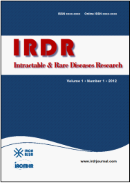BioScience Trends. 2018;12(3):170-177. (DOI: 10.5582/ddt.2018.01024)
Exploring the causes of peripheral intravenous catheter failure based on shape of catheters removed from various insertion sites.
Murayama R, Takahashi T, Tanabe H, Yabunaka K, Oe M, Komiyama C, Sanada H
The risk of peripheral intravenous catheter failure varies according to the insertion site. This study examined catheter shape just after removal to evaluate the causes of catheter failure according to site. This study was a secondary analysis of previous study data. Our observational study was conducted during a 6-month period at The University of Tokyo Hospital. Participants were hospitalized adults who received infusion therapy via a short peripheral catheter. We acquired ultrasound images of blood vessels and surrounding tissues at the catheter insertion site before catheter removal and clinical images of the removed catheters. We analyzed 184 catheters from 142 participants. There were no significant differences in the catheter failure rate (29.9%) among insertion sites. Curvature in the middle of the catheter was present in 9.2% of cases; the median bend angle at the catheter base was 9.1







